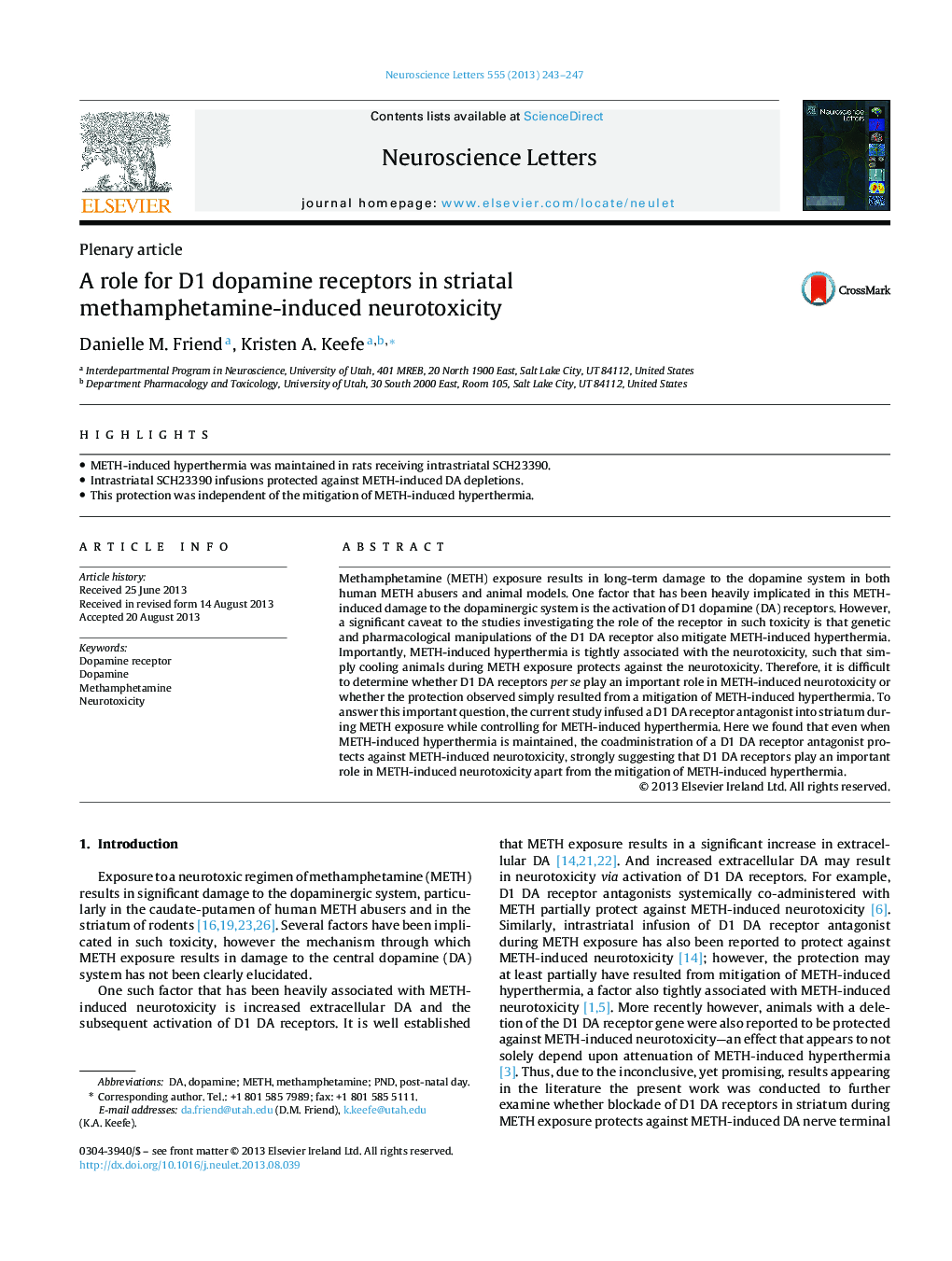| Article ID | Journal | Published Year | Pages | File Type |
|---|---|---|---|---|
| 4343894 | Neuroscience Letters | 2013 | 5 Pages |
•METH-induced hyperthermia was maintained in rats receiving intrastriatal SCH23390.•Intrastriatal SCH23390 infusions protected against METH-induced DA depletions.•This protection was independent of the mitigation of METH-induced hyperthermia.
Methamphetamine (METH) exposure results in long-term damage to the dopamine system in both human METH abusers and animal models. One factor that has been heavily implicated in this METH-induced damage to the dopaminergic system is the activation of D1 dopamine (DA) receptors. However, a significant caveat to the studies investigating the role of the receptor in such toxicity is that genetic and pharmacological manipulations of the D1 DA receptor also mitigate METH-induced hyperthermia. Importantly, METH-induced hyperthermia is tightly associated with the neurotoxicity, such that simply cooling animals during METH exposure protects against the neurotoxicity. Therefore, it is difficult to determine whether D1 DA receptors per se play an important role in METH-induced neurotoxicity or whether the protection observed simply resulted from a mitigation of METH-induced hyperthermia. To answer this important question, the current study infused a D1 DA receptor antagonist into striatum during METH exposure while controlling for METH-induced hyperthermia. Here we found that even when METH-induced hyperthermia is maintained, the coadministration of a D1 DA receptor antagonist protects against METH-induced neurotoxicity, strongly suggesting that D1 DA receptors play an important role in METH-induced neurotoxicity apart from the mitigation of METH-induced hyperthermia.
